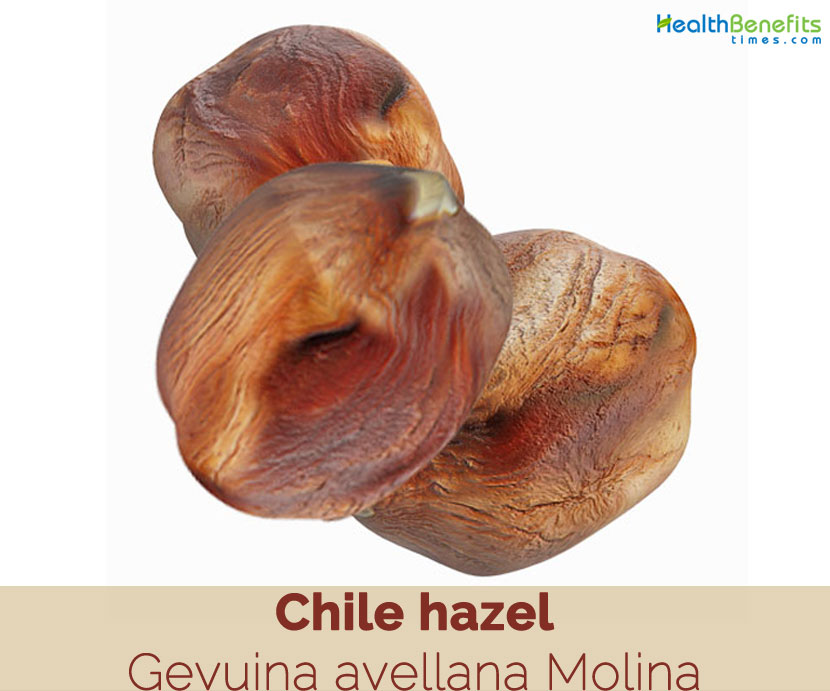
Plant Description
Chile hazel is a multi-stemmed medium-sized evergreen tree, or shrub that grows about 20 meters (65 feet) tall. The plant is found growing in wet mountain forests, snow-line down to the coast along the Pacific coast of the Andes. It can grow up straight or branched from the soil. Leaves are large, bipinnate, leaflets glossy, coriaceous dark green with serrated margins. Inflorescence is racemose, flowers are snow- to ivory-white, borne on the outside of the canopy in pairs. Tepals 4, fused into a single structure with stamens curving back at anthesis to reveal the simple style and ovary. Flowering normally takes place from June to August. Fertile flowers are followed by spherical to ellipsoid nut with a small point at the tip, 15-28 mm long and 13-18 mm wide (measurements for dried specimens). They are initially green, ripening through red to black, and some forms yellow when ripe; surface of dried fruit finely and irregularly longitudinally fissured. Only one seed are present that are globular with smooth, tough shell.
- Seed are consumed raw or cooked.
- A popular food in Chile where it is often sold in local markets and is a much sought after item of diet.
- Roasted seed is used as a coffee substitute.
- There are a wide variety of possible uses in food, e.g. in sweets, pastries, cakes, flour, and ice cream.
- Seeds can be used in a variety of confectionery (chocolates, cakes, muesli bars), cereal preparations, roasted nuts or they can be processed into gevuina butter, a high protein flour and a variety of other products.
Other facts
- Seedcase is a source of tannin.
- Wood is light, strong, easily worked, elastic, not very durable.
- It is used for furniture, oars, roof-shingles, cabinet and musical instrument making, and for boats making.
- High oil content of the fruit (50%) means that Gevuina has the potential for use in the food and cosmetic industries.
- Extraction of the oil leaves a residue that contains essential amino acids, which if converted to human food would be particularly useful in complementing diets of cereals and legumes.
- This ornamental plant is very rich in honey and that is the reason hundreds of bees swamps this area.
- Seed shells contain tannin that is used for tanning leather.
- Husks left over after nuts processing are rich in tannin.
- Its fine foliage is in demand in the cut flower market.
- Tree is found on badly eroded slopes and has potential for erosion control by binding soil liable to erosion.
References:
https://davesgarden.com/guides/pf/go/1449/
http://www.theplantlist.org/tpl1.1/record/kew-2825147
https://npgsweb.ars-grin.gov/gringlobal/taxonomydetail.aspx?17519
http://swbiodiversity.org/seinet/taxa/index.php?taxon=51357
http://www.plantsoftheworldonline.org/taxon/urn:lsid:ipni.org:names:703659-1#synonyms
https://pfaf.org/user/Plant.aspx?LatinName=Gevuina+avellana
http://sweetgum.nybg.org/science/world-flora/monographs-details/?irn=19571
https://en.wikipedia.org/wiki/Gevuina
Comments
comments